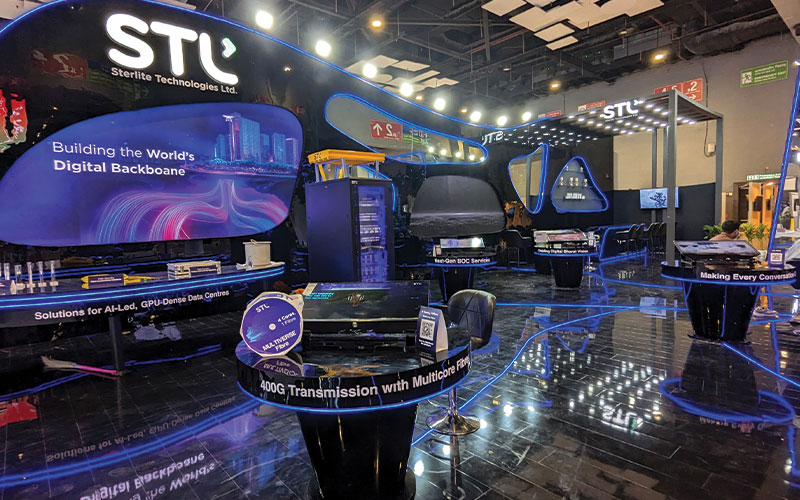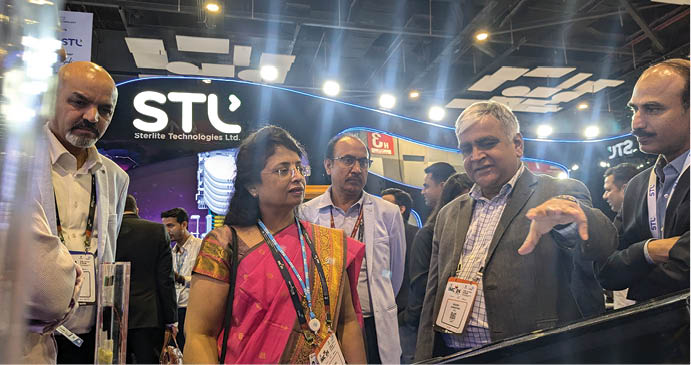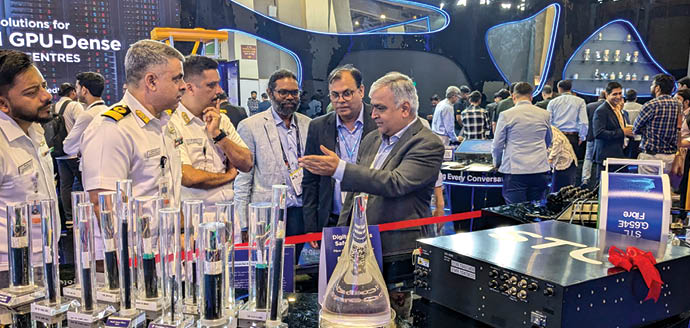With more than 700 patents in its bag, Sterlite Technologies Limited (STL) has launched a data center cabling portfolio to meet the growing needs of system integration, infrastructure for computers, the GPUs and data center. STL aims to increase its share in the US markets, as well as improve the quality of India’s digital infrastructure through fiber optic sensing. This was revealed by Dr. Badri Gomatam, Group Chief Technology Officer, Sterlite Technologies Limited (STL), during an exclusive interview with Wire & Cable India.

Wire & Cable India: Kindly walk us through the business journey of Sterlite Technologies Limited, highlighting major achievements and crucial milestones.
Badri Gomatam: STL was founded by Mr. Anil Agarwal in 1988 with the establishment of a copper cable manufacturing unit in Aurangabad. Since then, there has been no looking back. We set up an optical fibre cable manufacturing unit in Silvassa in 1993, followed by an optical fibre plant at Aurangabad in 1995 and a data cable manufacturing unit at Dadra in 2002. The Dadra unit remains one of India’s most advanced speciality cable manufacturing facilities till date. To research and build accessible network technologies of the future, STL set up ‘Centre for Smarter Networks’ at Gurgaon in 2017.
WCI: R&D plays a very important role in the development of any company. Please share your views on this.
BG: At STL, innovation is in our DNA. We basically have had structured journeys over the last 12-13 years. Our core philosophy for product development is our IP in India- the patents. Around 12-13 years ago, we had over 50 plus patents, now we have close to 700 patents. We are capable of defending ourselves and taking action against those infringing our intellectual property, both in India and abroad. Our R&D department covers all categories, including fibre, glass making, and cable design development. We have a very strong team that creates a lot of value for the algorithm.
Watch: West Coast Optilinks
WCI: Kindly tell us more about the recent advancements done by STL in the cable segment.
BG: STL is continuously working on improving the density and blow performance of its cables. We are moving to more advanced R&D, putting a lot of tools in our toolkit to improve the size, weight and density of our cables beyond the standard telecom size. We are putting multiple cores of glass in the same fiber within the same 125 micron. We have introduced a 4 core and a 7 core version. We expect this to impact the high density market. We have a huge product portfolio, ranging from large count cables up to 6000 fibres to small count micro cables, comprising 12 fiber to even 1 fiber. Some 7-8 years ago, we developed the rollable ribbon technology and started exporting products on this line. With the help of this technology, the weight of the cable reduced significantly. Due to its small size, the cable consumed less plastic and became very lightweight, while retaining the strength and agility. Other manufacturers recently adopted this technology.
We launched our data center cabling portfolio, which is an end-to-end solution for the next wave of intra data centers. This new portfolio ranges from batch cables to assemblies to combinations, etc. Normally, we have been outsourcing, but now we will manufacture high-density, lightweight, small size and cost-effective products under the Make in India campaign. We are very agile and quick in terms of meeting a customer’s requirements. STL is evolving its service capability as well to meet the growing needs of system integration, infrastructure for computers, the GPUs and data center. We are overall well-positioned for the future, considering the fact that with the advent of 6G, more fibers and towers will be deployed.

Generative AI, large language models, and the growth of data centers, all this creates an environment for sustainable growth in the times to come.

WCI: Please tell us about your market footprint.
BG: We are well-positioned in the US and Europe, having manufacturing facilities in Italy, in the US, China, and of course in India. We provide services to the UK also. We look forward to having a considerable market share in the US in future as we grow our footprint and continue our upward growth trajectory in India as well.
Also Read: Nirmal Wires Re-Imagineering Tomorrow with Automation & Data Analytics

Now we will manufacture high-density, lightweight, small size and cost-effective products under the Make in India campaign.
WCI: How do you envision the future of the industry? What contributions is STL ready to make towards the growth of the industry?
BG: We are expecting a boom in data centers in the next two years, especially considering the fact that around two-and-a-half billion people across the world, which makes up around 35 percent of the global population, is still unconnected. Even in India there is tremendous scope for growth and regional connectivity. There are many places where the internet has either not reached or has reached partially. On top of that, generative AI, large language models, and the growth of data centers, all this creates an environment for sustainable growth in the times to come.
Our major role is in connectivity. We will continue to evolve on that front, having deeper engagement on the special data center side. On the telecom side, fiber to the home is happening. So, we are heavily engaged in the connectivity and the deployment part. We will continue to engage in fiber optic sensing. We are firm believers that the quality of infrastructure can be improved using fiber optic sensing. In India, it can reduce the time to repair networks and observe a failure, and also predict a failure even before it occurs. These are the kinds of technologies we feel will help increase the quality of the network, especially in the context of data centers. As the network availability goes up, both the restoration time and the servicing costs will go down. We feel there is another layer that we can contribute to in the fiber domain – fiber optic sensing.





